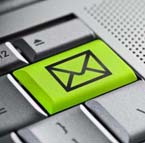Evaluate Inactive Email Names With a Staged Approach
 When email marketers consider clearing dead weight off their house file, the best approach is look at the list segment by segment.
When email marketers consider clearing dead weight off their house file, the best approach is look at the list segment by segment.
"You do need to address those inactives, but you don't want to take an axe to the list too quickly," says Stephen Guerra, manager, strategy consulting at Silverpop. "You want to take a staged approach."
For active names on your file, Guerra suggest simply treating them as you normally would, and stick to your normal emailing schedule. For semi-inactives, mail to them less frequently and start varying offers.
Resending messages is a viable tactic for many senders and lists, he says. "Look at your program—are you perceived as an overly aggressive mailer, or would your existing program support resending?"
When trying to reactivate inactive email subscribers, an analysis of the list is a good first step, notes Guerra. Most marketers keep the date of opt-in on file, so look at when your inactives signed-up to receive communications from you.
"How people joined the list is relevant—different groups of people have a higher tendency to be inactive," he notes. "Names brought in through sweeps offers or rented lists don't perform as well."
Marketers can break down the list into six month increments, for example. Look at, say, 6,000 subscriber who haven't opened a message from your firm in the last six months and analyze their behavior.
"There are a certain percentage who will wake up, but what's the point when they DON'T wake up?" says Guerra. "After six months, people might wake up at a rate of six percent, but at the two year mark it might only be one percent."
Take a hard look at your program to uncover why people are going inactive, he advises. "Are you giving them enough information up front to keep them active? What's your welcome series like, and how an you make that better so you don't have so many inactives down the line?
A great offer can "wake up" inactives, but then you have to keep working to keep them. "You can't just then follow up by serving the same old message again," says Guerra. "Can you serve their needs better? Do you have a preference center where they could tell you more about themselves, to help you change the relationship or conversation?"
Other factors to consider about inactives include:
Timing: Consider when you're sending your messages. The optimal day of week or time of day can vary from person to person.
Mobile: Are your messages optimized for mobile devices? Many people are using their smartphone as a "triage" device> to cut down on the amount of email they have to deal with later on the desktop.
Staying focused: Multiple messages in an email can confuse a reader. Likewise, the landing page an email recipient is directed to should have a clear purpose.
Subject line testing: What is your approach, and does your subject line serve your purpose? Is your email offer focused? Relationship focused? All are valid but you need to know what you're trying to accomplish.
Design: Try mixing it up. There may be a large percentage of your readers who are opening your emails but not bothering to turn on the images. An interesting new creative approach may get them back into the fold.































